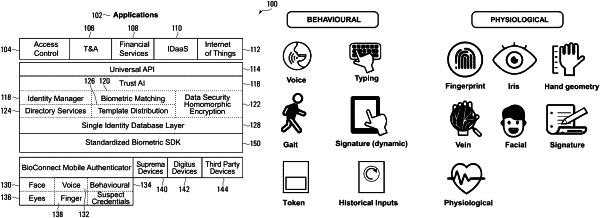| CPC G06F 21/32 (2013.01) [G06F 21/316 (2013.01); G06V 40/70 (2022.01)] | 20 Claims |

|
1. An adaptive identity verification system for provisioning identity verification in relation to an identity of one or more users, the system automatically adapting user identification decisions to a user identification challenge request, the adaptive identity verification system comprising:
a computer memory;
a processor coupled with the computer memory configured to:
receive one or more identity information data sets obtained from one or more identity sensor devices;
receive the user identification control challenge request and receive the one or more identity information data sets, and upon each attempted verification against the identity template data corresponding to a specific user of the one or more users, modify an adapted confidence score aggregated from each contribution to the adapted confidence score from each attempted verification, the contribution to the adapted confidence score is tuned based on at least one of a false rejection rate or a false positive rate associated with a modality corresponding to the attempted verification, wherein the modification comprises modifying a baseline confidence contribution score from each successful verification in accordance with one or more identity attributes to generate the adapted confidence score aggregated from each baseline confidence contribution score; and
responsive to the adapted confidence score being reduced below a required confidence score threshold, generate a response signal representing an access provisioning signal for controlling an access control mechanism to deny accesses and to request an additional user identification control challenge, the adapted confidence score is configured to be degraded over time during a specific user session such that the additional user identification control challenge is periodically triggered as the adapted confidence score becomes reduced below the required confidence score threshold.
|